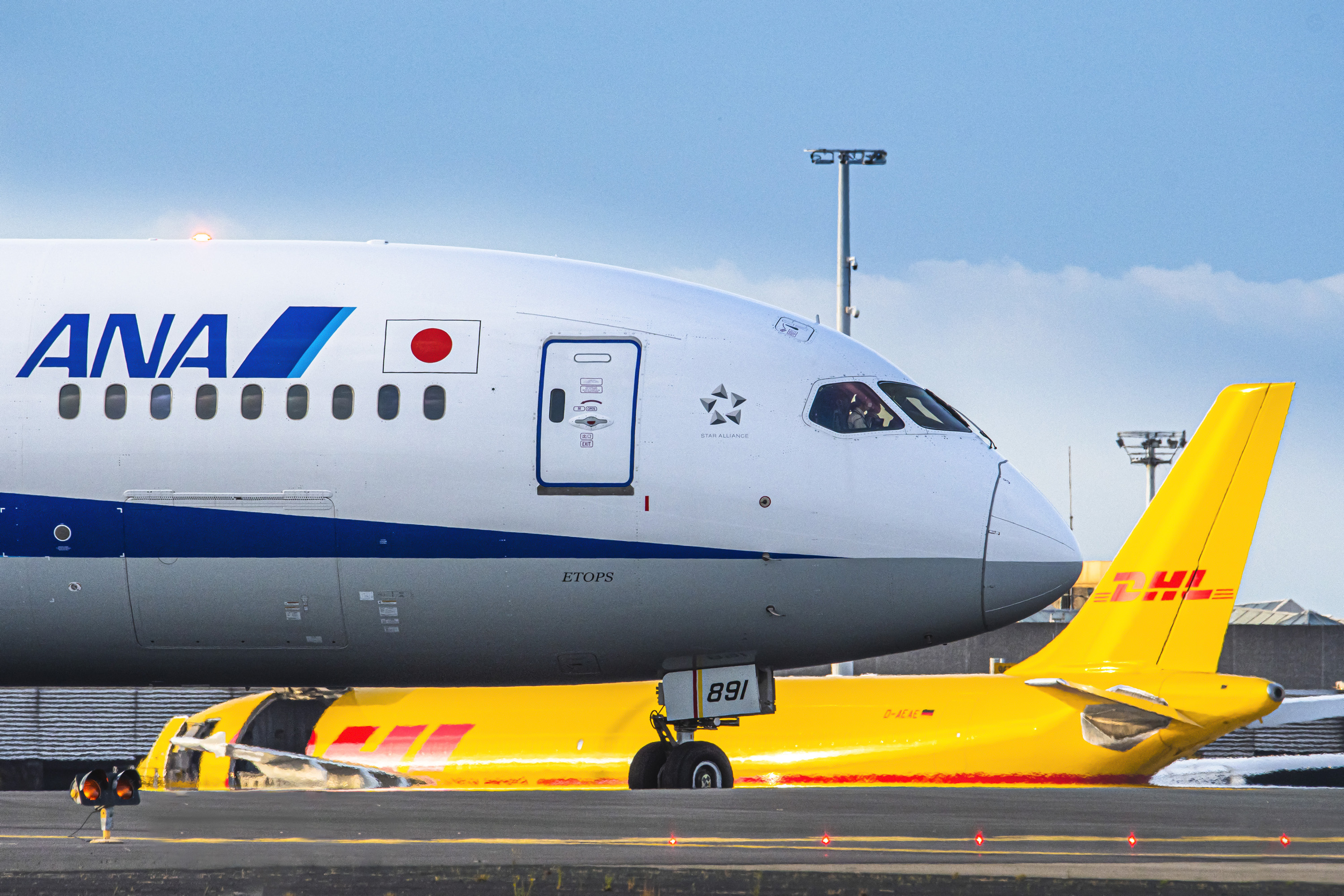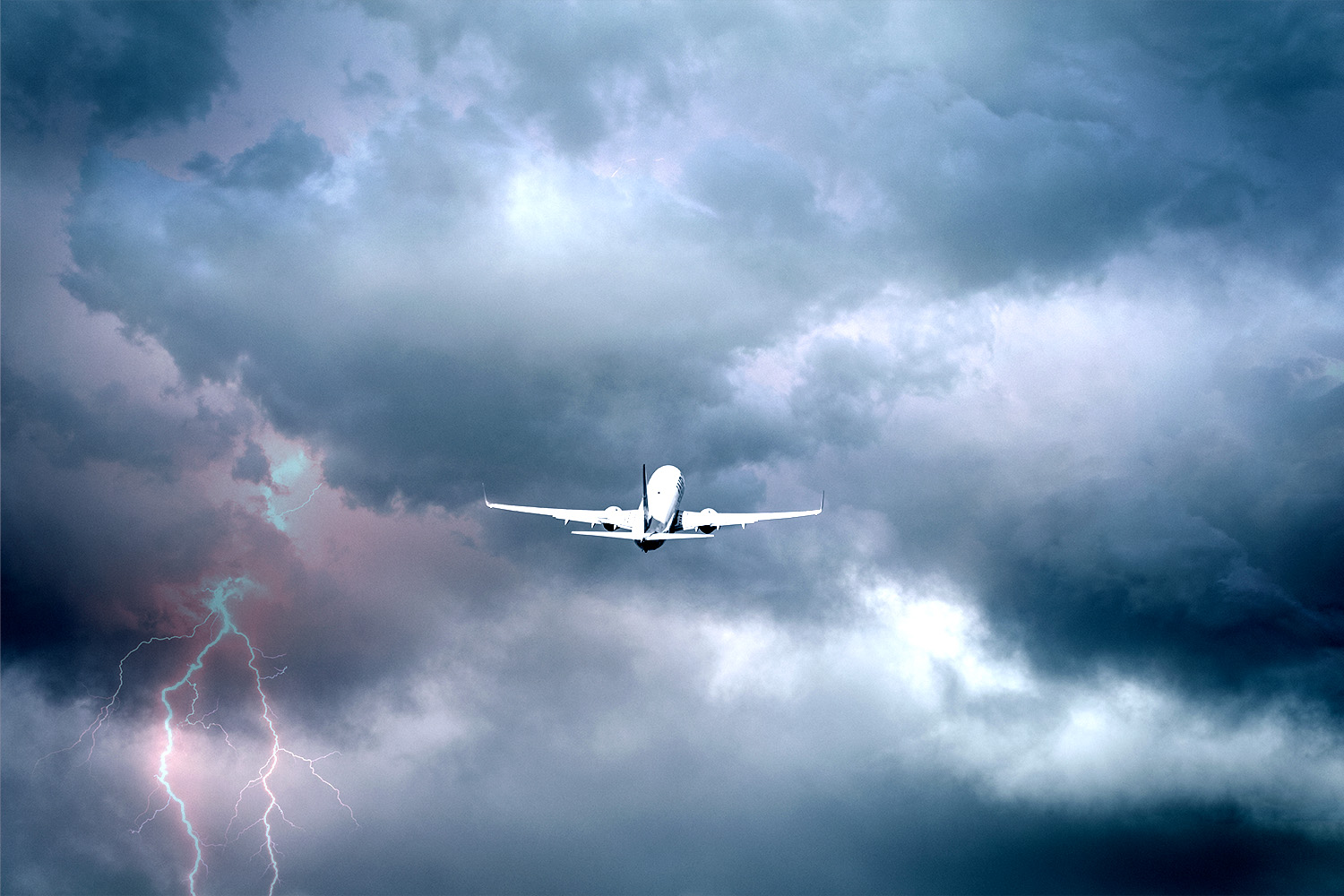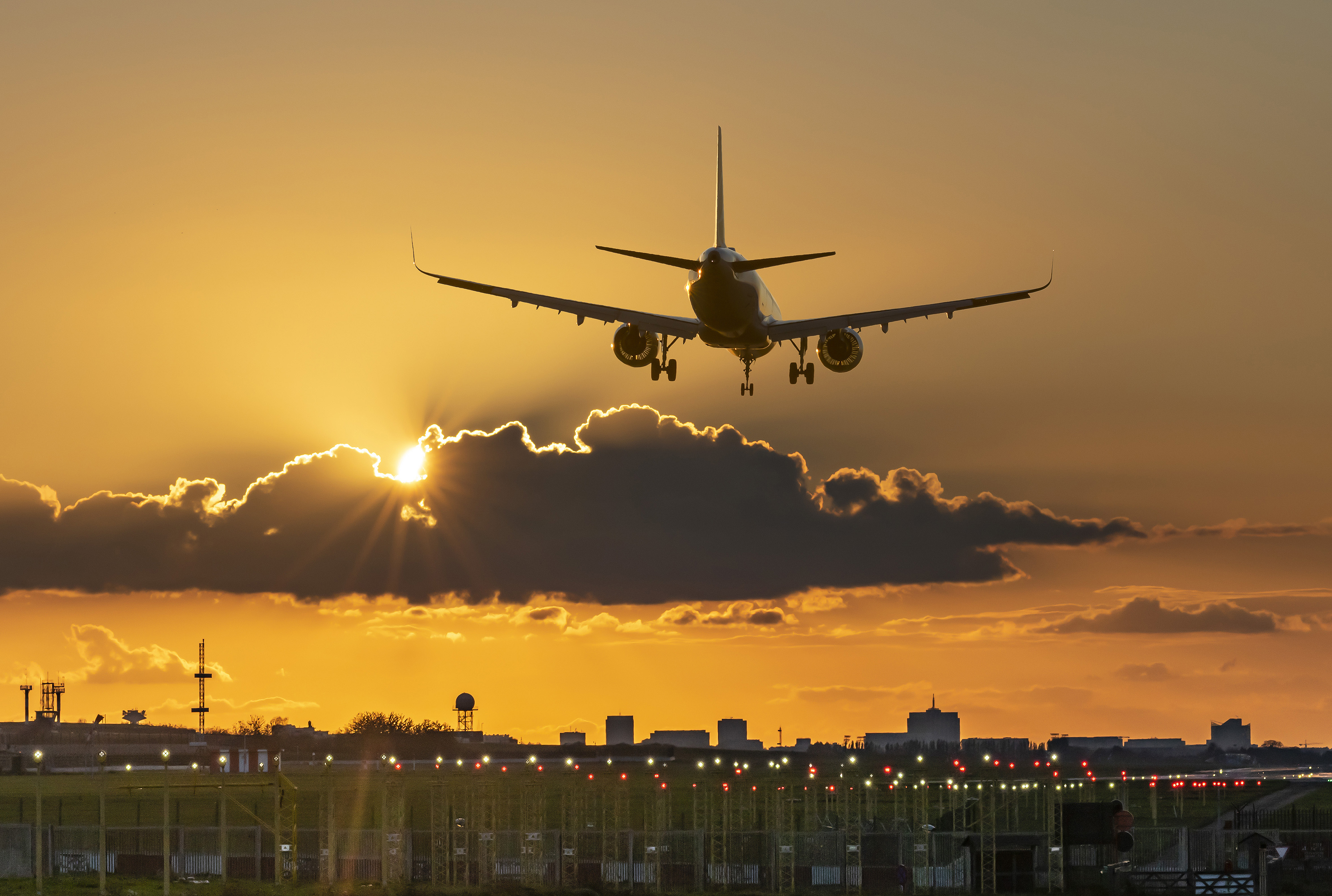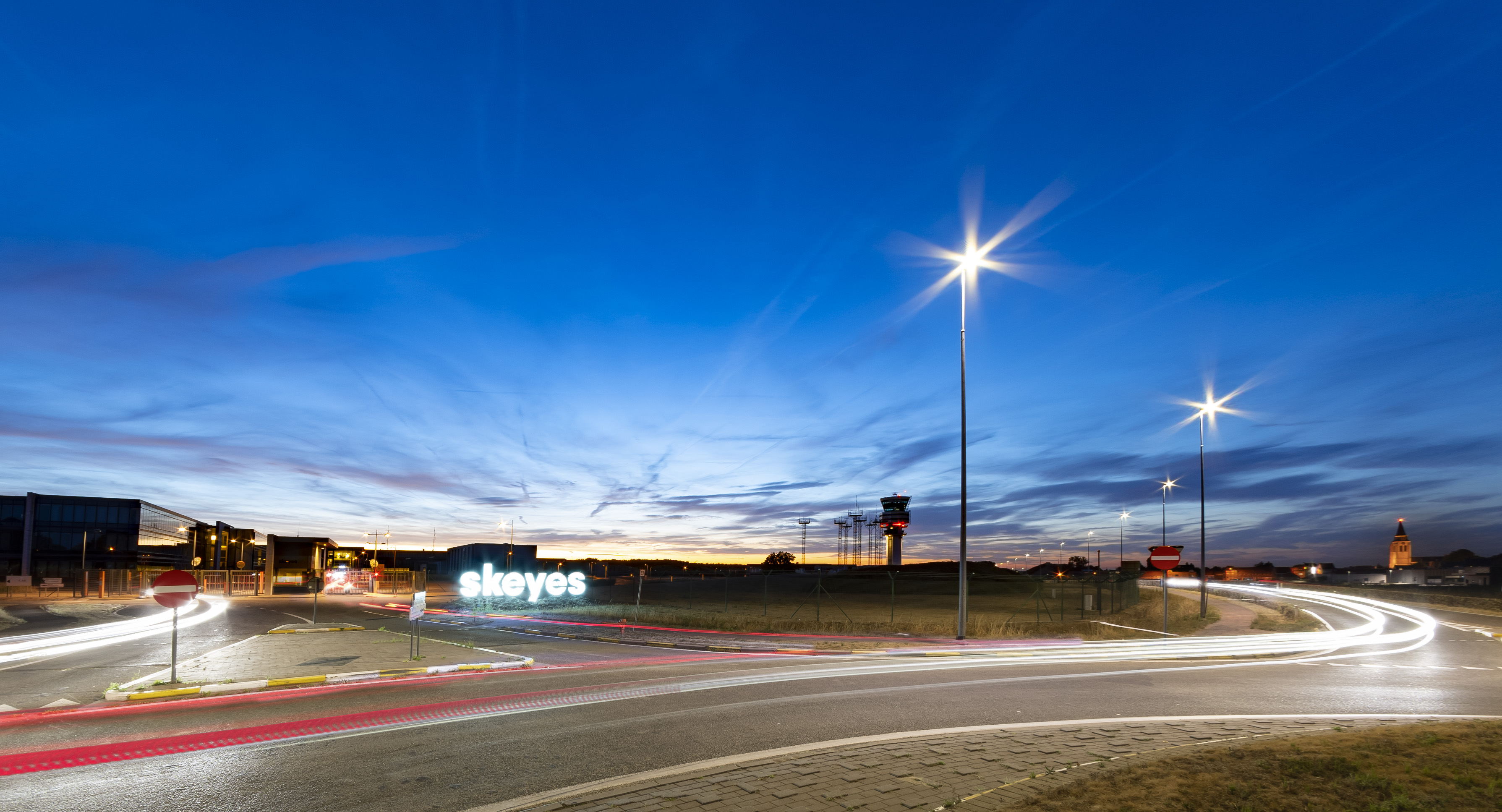A world of redefined efficiency
In the new world of aviation that is taking shape, social, economic and environmental stakes will be key. skeyes is working alongside its customers and airspace users to meet these new challenges by improving and adapting its services towards redefined efficiency that will respond to new needs in terms of safety, punctuality and traffic flow in an optimal manner while controlling costs and limiting the impact on the environment.

Guaranteed punctuality despite a more difficult context in 2022
The punctuality of an aircraft is dependent on many factors, some of which can be controlled by air navigation management (grouped under the acronym CRSTMP - C-Capacity, R-Routing, S-Staffing, T-Equipment, M-Airspace management, P-Special events) and some - such as the weather - that are beyond anyone’s control. Others are dependent on airport services. In all circumstances, in flight or on arrival at an airport, skeyes manages traffic in order to keep delays to a minimum and thus reduce costs for its customers, waiting times for passengers and the environmental impact.
In 2022, the sharp increase in traffic - +35% - combined with the disruption to traffic flows in Europe following the closure of Ukrainian airspace put more pressure on the network and made managing punctuality more difficult.

of flights were managed in a punctual manner by skeyes in 2022.
This is a decrease of 1.1% compared to 2021, but the Russian-Ukrainian conflict, which broke out on 24 February 2022 and led to the closure of Ukraine’s airspace significantly impacted traffic flows in Europe and therefore also those managed by skeyes.
En-route delays
= 9.6 seconds delay per flight <br><br>Average en-route ATFM delay per flight (CRSTMP causes). This figure represents the average delay per flight caused by skeyes’ en-route air navigation services. Although this is a substantial increase compared to the previous year’s result, this performance remains relatively good given the more difficult context than that of 2021.
= 75 seconds delay per flight<br><br>Average en-route ATFM delay per flight in FABEC airspace (CRSTMP causes). FABEC comprises six Member States (Belgium, France, Germany, Luxembourg, the Netherlands and Switzerland) and manages more than 55% of European air traffic. skeyes’ performance in terms of en-route punctuality helped reduce the average en-route delay in FABEC.
Arrival delays at airports
To assess the performance of air navigation in terms of airport punctuality, only arrivals are taken into account. The timely departure of an aircraft is dependent on many other factors - such as ground services (handling, refuelling, etc.) - which are beyond skeyes’ control, but which are coordinated with skeyes based on the Airport CDM (Collaborative Decision Making) concept through an information exchange application - AMS (Airport Movement System) - developed by skeyes.

Airports
BRUSSELS AIRPORT
= 6.6 seconds delay per flight all causes combined
of arrival delays at Brussels Airport are due to weather conditions.
Brussels Airport is the only Belgian airport for which a punctuality performance target has been set.
= 1.2 seconds delay per flight on arrival at Brussels Airport if only the CRSTMP causes that skeyes can control are taken into account.
LIEGE AIRPORT
= 3.6 seconds delay per flight
of arrival delays at Liege Airport are due to weather conditions.
= 0 seconds delay per flight if only the CRSTMP causes that skeyes can control are taken into account.
OSTEND-BRUGES AIRPORT
= 0 seconds delay per flight
BRUSSEL SOUTH
CHARLEROI AIRPORT
= 0 seconds delay per flight
ANTWERP AIRPORT
= 0 seconds delay per flight
Ostend and Antwerp airports have not recorded any delays since 2018.
skeyes weather service in support of performance
Traffic flows are also managed and regulated at full European network level. This task is carried out by the Brussels-based Network Manager at EUROCONTROL.
During the summer of 2022, the skeyes weather service contributed to the cross-border, multi-party service for forecasting convective phenomena that can generate thunderstorms, heavy rainfall or hail and therefore impact air traffic.
The presence of a skeyes meteorologist in the Network Manager’s operations centre has helped to predict and manage these phenomena and thereby enhance the performance of the network.

Reducing environmental impact
Coordinating activities at the airport to effectively manage traffic flows also has a positive impact on fuel consumption and therefore on emissions, local air quality, noise and costs for airlines. Aircraft engines are started up at the right time and waiting times on taxiways are kept to a minimum.
Green landings
(CDO - Continuous Descent Operations)
Another way to reduce aircraft consumption is to manage air traffic so that aircraft can be landed using the Continuous Descent Operation (CDO) procedure. The CDO - also known as green landing - is an operation in which the aircraft descends continuously, employing minimum engine thrust to the greatest possible extent, depending on the characteristics of the flight and the air traffic situation. This enables a reduction in noise pollution, fuel consumption and greenhouse gas emissions.
of landings followed the green landing procedure at Brussels Airport in 2022. This figure remained stable compared to 2021.
of landings followed the green landing procedure at Brussels South Charleroi Airport in 2022.
+8%
compared to 2021.
of landings followed the green landing procedure at Liege Airport in 2022.
-7%
compared to 2021.
Number of CDOs in absolute terms relative to number of arrivals in 2022
of departing aircraft at Brussels Airport have received clearance to start up their engines at the expected time (TSAT - Target Start-up Approval Time).
of aircraft at Brussels Airport taxied between the runway and their stand in less than the average time required (VTT - Variable Taxi Time).
Cooperating at all levels for sustainable aviation
Collaborative Environmental Management (CEM)
skeyes cooperates with airlines and airports in order to take joint initiatives that reduce the environmental impact of airport operations.
RNP at Liege Airport
Thanks to the work carried out by the CEM group at Liege Airport since 2020, the new RNP (Required Navigation Performance) approach procedures have been fully operational since 2022 and are offered to all airlines at Liege Airport.
RNP procedures, based on satellites and point-to-point navigation, optimise the fuel-intensive final approach phase.

STARGATE : RNP approach at Brussels Airport
A series of tests of RNP approach procedures brought together the partners of the STARGATE project, including skeyes, between May and September 2022, in order to assess the frequency of use as well as the positive impacts from the point of view of number of kilometres travelled as well as fuel consumption, greenhouse gas emissions and noise pollution.
Clean Sky completed in 2022
In 2020, skeyes committed to the Clean Sky project, the aim of which is to develop technologies to reduce the environmental impact of aviation.
More specifically, skeyes contributed to the Dispatcher 3 project, which aimed to improve airline operations by providing technological tools to systematically estimate the variability between planned and executed flight plans. The project was completed in November 2022.
ATM Environmental Transparency Working Group
Under the aegis of EASA and EUROCONTROL, this working group, in which skeyes participated, completed its work in 2022. This resulted in the identification of existing and future environmental performance indicators, strategic and technical recommendations, tools and information to monitor the impact of the operation of air traffic control bodies on the environment.

FABEC Standing Committee Environment
skeyes meets regularly with its FABEC partners in the FABEC Environment Standing Committee permanent working group. At the end of 2022, a workshop devoted to Vertical Flight Efficiency brought together experts from air navigation service providers, airlines and the aeronautical industry to coordinate initiatives to reduce the ecological footprint of aviation.
HERON
Initiated at the end of 2022, HERON (Highly Efficient Green Operations) is a large-scale project that brings together ANSPs, including skeyes, airlines and industry, and is financed by the EU as part of the SESAR programme. HERON has set ambitious targets to reduce noise, fuel consumption and CO2 emissions from air transport.
HERON is planning a series of demonstrations under real conditions including, at Brussels Airport, approaches with an increased glideslope angle facilitating CDOs (Continuous Descent Operations).



